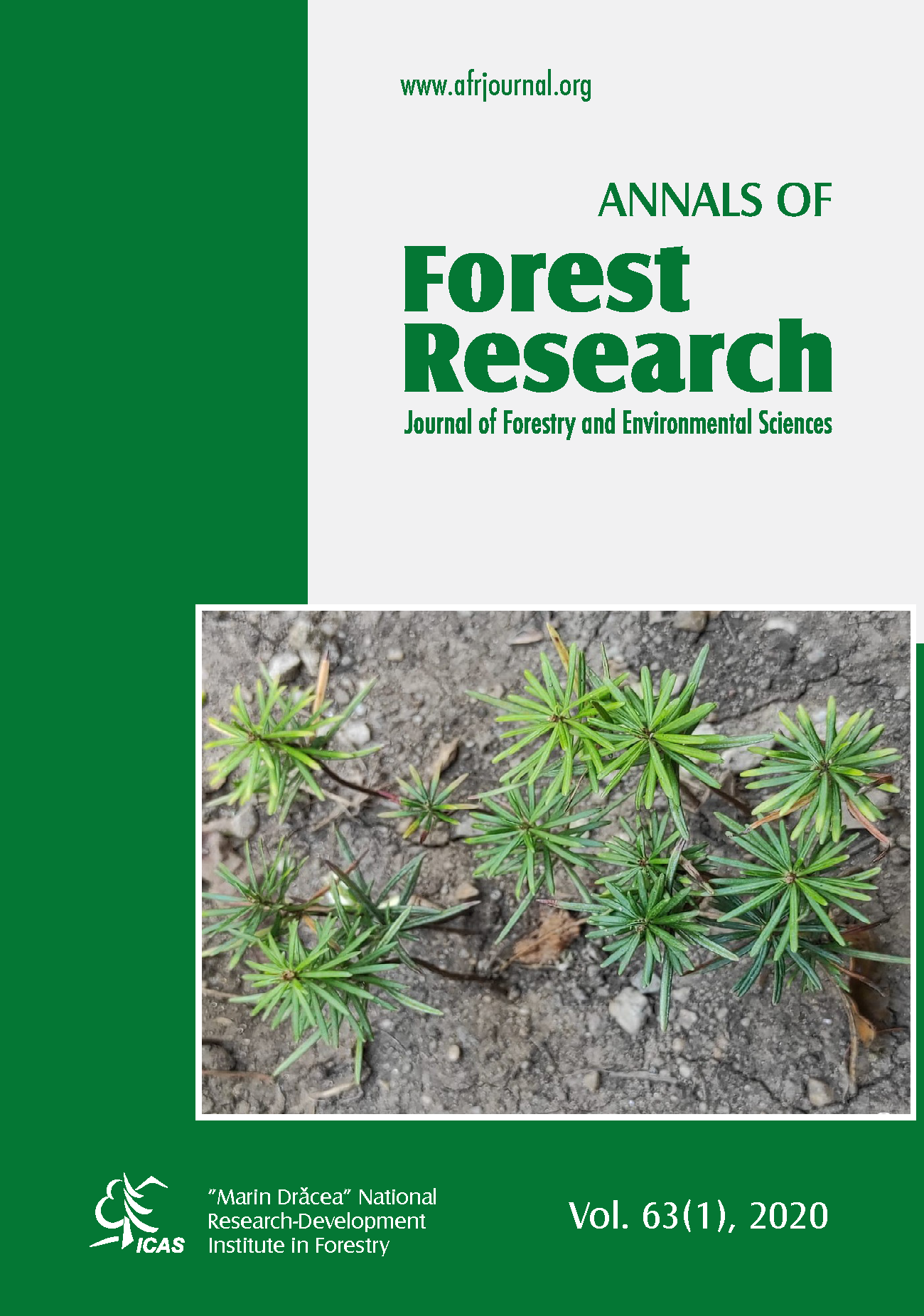Molecular mapping of the Pinus monticola Cr2 gene using AFLP and SCAR markers
DOI:
https://doi.org/10.15287/afr.2008.153Keywords:
Pinus monticola, molecular mapping, Cr2 Gene, AFLP and SCAR markersAbstract
White pine blister rust (WPBR), caused by Cronartium ribicola, is a devastating disease in five-needle pines. Genetic resistance is an important component of integrated strategies to control WPBR. The major resistance gene Cr2, discovered by Kinloch et
al.(1999), is also effective against British Columbia (BC) isolates of WPBR (Hunt et al. 2004). Pyramiding Cr2 gene with other resistance
genes is being pursued as a strategy in BC white pine breeding. To facilitate this strategy, we have recently identified a few RAPD markers
linked to Cr2 at one side (Liu et al. 2006). The objective of the present study was to identify amplified fragment length polymorphism
(AFLP) markers linked to both sides of Cr2 for its more precise apping. Use of the AFLP technique combined with bulked segregant analysis (BSA) and haploid segregation analysis allowed the identification of five AFLP markers. Of these five AFLP markers in the Cr2 linkage, markers EacccMccgat-365, EactgMcccac- 290, and EacagEacag-750 were
linked in coupling and EacagMcccag-160r and EacccMccgat-180r in repulsion. Following cloning and sequencing of the AFLP and
RAPD markers, specific PCR primers were designed and used in the amplification of sequence characterized amplified region
(SCAR) markers at both sides of Cr2. EacccMccgat- 365 and RAPD marker U570-843 reported previously were converted into SCAR
markers. These two SCARs segregated in a 1:1 (presence:absence) ratio and the scoring cosegregated with their respective AFLP or
RAPD marker. The SCAR marker EacccMccgat- 365-scar was positioned at 3.1 Kosambi cM from one side of Cr2 and U570-843-scar
localized at 1.4 Kosambi cM from other side. Both SCAR markers can be useful in breeding programs with marker-assisted selection procedure
to screen for resistance. This study represents the first report of the development of PCR-based sequence-specific markers linked
to blister rust resistance in five-needle pines. These findings may improve the precision of molecular breeding for blister rust resistance
and could be the staging point for isolating the Cr2 gene.
Downloads
Published
Issue
Section
License
All the papers published in Annals of Forest Research are available under an open access policy (Gratis Gold Open Access Licence), which guaranty the free (of taxes) and unlimited access, for anyone, to entire content of the all published articles. The users are free to "read, copy, distribute, print, search or refers to the full text of these articles", as long they mention the source.
The other materials (texts, images, graphical elements presented on the Website) are protected by copyright.
The journal exerts a permanent quality check, based on an established protocol for publishing the manuscripts. The potential article to be published are evaluated (peer-review) by members of the Editorial Board or other collaborators with competences on the paper topics. The publishing of manuscript is free of charge, all the costs being supported by Forest Research and Management Institute.
More details about Open Access:
Wikipedia: http://en.wikipedia.org/wiki/Open_access






